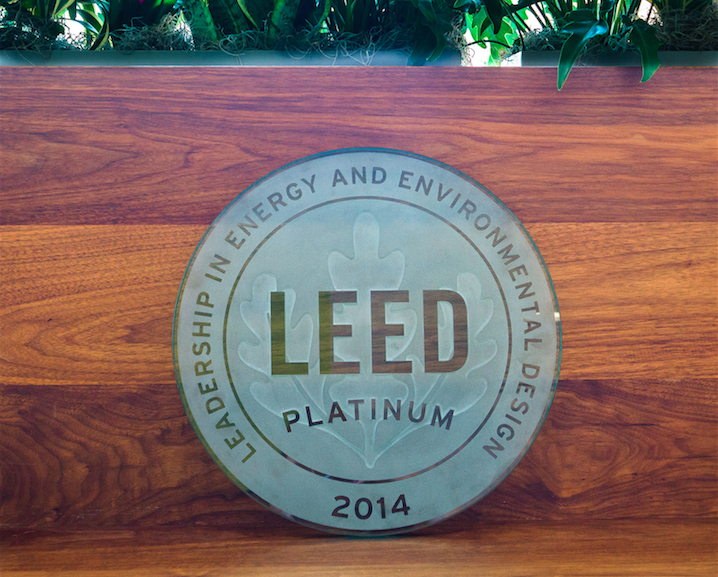Code Green Solutions


This past Friday, world leaders convened at a United Nations summit meeting in New York to adopt a new platform for international development—the Sustainable Development Goals (SDGs). The SDGs replace and improve upon the first major UN-led effort to reduce global poverty, known as the Millennium Development Goals. Also called the Global Goals, the SDGs articulate an ambitious agenda designed to “shift the world onto a sustainable and resilient path.”
This roadmap for sustainable development identifies 17 goals with 169 specific targets to be achieved by 2030. The goals cover a wide array of objectives, from ending global poverty to ensuring access to sustainable forms of energy to promoting peaceful and inclusive societies. The multi-faceted approach to sustainable development embodied within the SDGs presents substantial opportunities for green building to demonstrate its value as an important component in sustainable development. So how can LEED help the world achieve the newly minted Global Goals? Here are five ways in which LEED credits and prerequisites relate directly to the SDGs.[1]
Goal 3: Ensure healthy lives and promote well-being for all at all ages.
Target 3.9: By 2030, substantially reduce the number of deaths and illnesses from hazardous chemicals and air, water and soil pollution and contamination.
How LEED can help: The LEED category for Indoor Environmental Quality features several credits and prerequisites that serve directly to reduce exposure to hazardous chemicals and air pollution. In particular, the Minimum Indoor Air Quality Performance prerequisite stipulates strict requirements for ventilation and monitoring of air quality according to rigorous international standards.
Goal 6: Ensure access to water and sanitation for all.
Target 6.4: By 2030, substantially increase water-use efficiency across all sectors and ensure sustainable withdrawals and supply of freshwater to address water scarcity and substantially reduce the number of people suffering from water scarcity.
How LEED can help: The Water Efficiency LEED category offers three prerequisites and four credits specifically geared toward reducing water consumption and increasing water efficiency. As an example, the Indoor Water Use Reduction prerequisite calls for the installation of water efficient appliances, fittings, and fixtures designed to significantly reduce water use, thus aiding in the effort to combat water scarcity.
Goal 7: Ensure access to affordable, reliable, sustainable and modern energy for all.
Target 7.2: By 2030, increase substantially the share of renewable energy in the global energy mix.
How LEED can help: Energy and Atmosphere, LEED’s largest category in terms of total credit opportunities, provides numerous ways to reduce energy consumption and the economic and environmental harms associated with fossil fuels. One such strategy can be found in the credits awarded for Renewable Energy Production, which encourage the purchasing or leasing of renewable energy systems like solar photovoltaic roofs.
Goal 11: Make cities inclusive, safe, resilient and sustainable.
Target 11.c: Support least developed countries, including through financial and technical assistance, in building sustainable and resilient buildings utilizing local materials.
How LEED can help: The Materials and Resources category presents options for the sourcing, storage, and disposal of building materials in ways that limit negative environmental impacts before, during, and after the construction phase. Within this category, the credit for Building Product Disclosure and Optimization—Sourcing of Raw Materials privileges the use of products extracted, manufactured, and purchased within 100 miles of the project site, thus reducing carbon emissions and supporting local industry.
Goal 15: Protect, restore and promote sustainable use of terrestrial ecosystems, sustainably manage forests, combat desertification, and halt and reverse land degradation and halt biodiversity loss.
Target 15.5: Take urgent and significant action to reduce the degradation of natural habitats, halt the loss of biodiversity and, by 2020, protect and prevent the extinction of threatened species.
How LEED can help: The Sustainable Sites category prescribes ways to ensure that project sites are safe for human activity and respect the unique conditions of surrounding areas. Of particular relevance is the credit for Site Development—Protect or Restore Habitat, which seeks to conserve existing natural areas and restore damaged areas by promoting the planting of native or adapted vegetation on a significant portion of a given project site.
The list above is illustrative, not exhaustive. There are many more ways in which LEED interfaces with the goals and targets set forth in the new SDGs. In addition, just as the LEED credits and prerequisites may overlap and lead to synergies, so too do the SDGs. Therefore, certain LEED credits and prerequisites may in fact help countries reach targets within several goals simultaneously.
LEED has proven to be feasible and popular across the developing world. Now, at the dawn of a new era in sustainable development, the need for LEED has never been clearer or more urgent. Policymakers, planners, and builders alike would be wise to begin integrating LEED and sustainable building practices into national strategies for achieving the SDGs.
[1] All descriptions of LEED credits and prerequisites are drawn from LEED v4 for Building Design + Construction, available at http://www.usgbc.org/sites/default/files/LEED%20v4%20BDC_07.01.15_current.pdf.